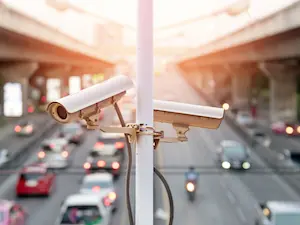Securing the Streets: Remote Techs’ Guide to Surveillance Cameras Near Los Angeles Metro Area
Posted By Remote Techs On 08-May-2024

In our mission to ensure safety and security within the Los Angeles Metro Area, Remote Techs takes immense pride in providing cutting-edge surveillance solutions.
As we navigate the intricacies of surveillance camera systems, let’s delve into the importance, types, and strategic placement of these cameras for an adequate security infrastructure.
As Remote Techs continue to innovate and evolve, we remain committed to delivering tailored surveillance solutions that meet the dynamic security needs of our communities.
1. Understanding the Significance of Surveillance Cameras:
Surveillance cameras serve as the vigilant eyes of law enforcement agencies and security personnel, offering real-time monitoring and evidence collection. They act as a deterrent to criminal activities, promote public safety, and aid in investigations.
Types of Surveillance Cameras:
a. Fixed Cameras:
Positioned in strategic locations, these cameras offer a stable view of specific areas, ideal for constantly monitoring high-traffic zones.
b. Pan-Tilt-Zoom (PTZ) Cameras:
These versatile cameras can rotate horizontally and vertically, providing a wider coverage area. PTZ cameras allow operators to zoom in on suspicious activities for detailed scrutiny.
c. Wireless Cameras:
With advancements in technology, wireless cameras offer flexibility in installation without wiring constraints, making them suitable for remote or hard-to-reach locations.
d. Infrared (IR) Cameras:
Designed for low-light or nighttime surveillance, IR cameras utilize infrared illumination to capture clear images in challenging lighting conditions.
Placement Strategies for Maximum Efficacy:
a. High-Traffic Areas:
Placing cameras in busy intersections, transportation hubs, and commercial districts enhances surveillance coverage and facilitates rapid incident response.
b. Vulnerable Points:
Identify vulnerable points such as blind spots, alleys, and parking lots. Install cameras in these areas to mitigate security risks and ensure comprehensive monitoring.
c. Perimeter Surveillance:
Strategically placed cameras strengthen overall security measures by securing the perimeter of residential complexes, industrial sites, and government facilities.
d. Integration with Public Infrastructure:
Collaborating with local authorities to integrate surveillance cameras with streetlights, traffic signals, and public Wi-Fi networks optimizes resources and enhances surveillance capabilities.
Technological Advancements Driving Innovation:
a. Artificial Intelligence (AI) Integration:
AI-powered analytics enable proactive threat detection by identifying suspicious behaviors, unauthorized access, and abnormal patterns in real time.
b. Cloud Storage Solutions:
Cloud-based storage offers scalability and accessibility, ensuring secure data storage and easy retrieval of surveillance footage from any location.
c. Remote Monitoring and Control:
Remote access capabilities allow security personnel to monitor live feeds, adjust camera settings, and respond to incidents promptly, irrespective of location.
Regulatory Compliance and Privacy Considerations:
a. Compliance with Legal Frameworks:
Adhering to local, state, and federal surveillance regulations is imperative to safeguarding privacy rights and maintaining ethical standards.
b. Data Protection Measures:
Implementing robust encryption protocols, access controls, and data anonymization techniques safeguards sensitive information and mitigates the risk of unauthorized access or misuse.
The strategic deployment of surveillance cameras is pivotal in bolstering public safety and crime prevention efforts in the Los Angeles Metro Area. Together, let’s secure the streets and build a safer tomorrow.